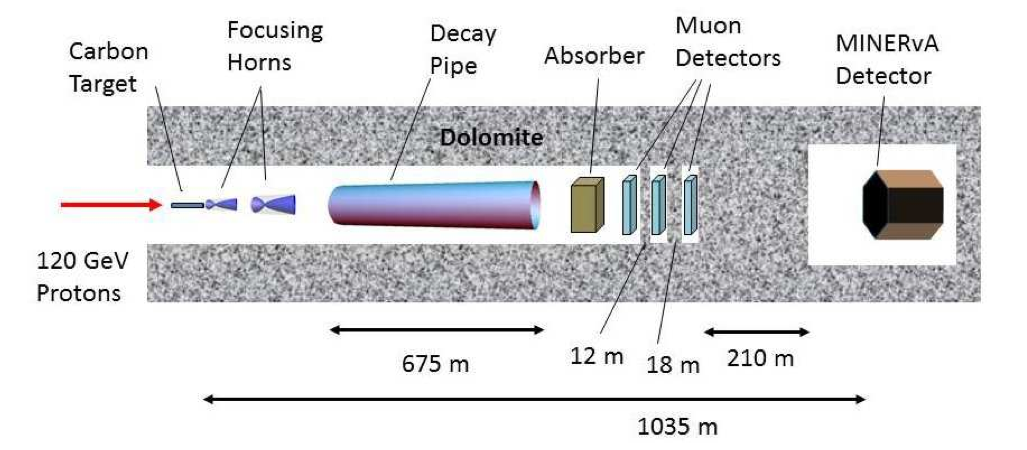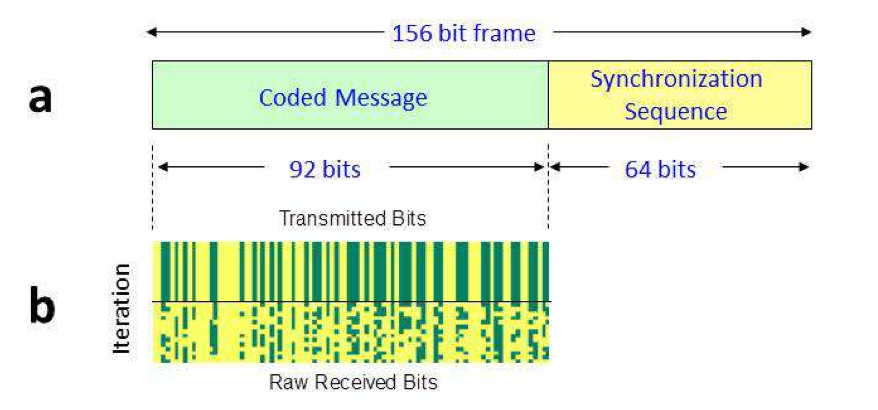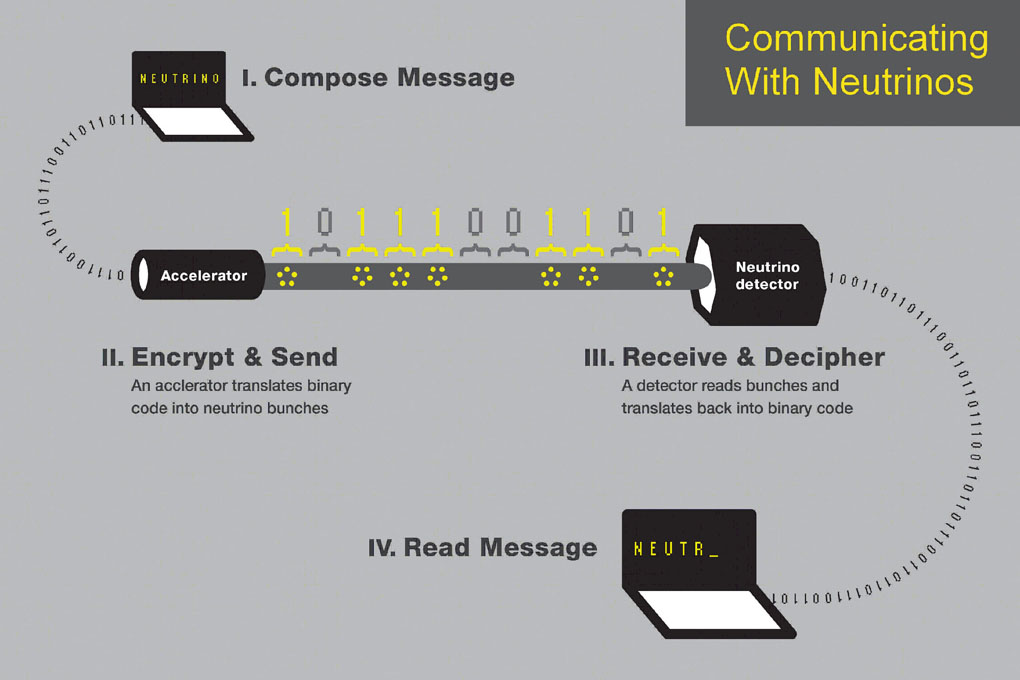First communication using neutrinos
March 15, 2012
A group of scientists led by researchers from the University of Rochester and North Carolina State University have for the first time sent a message using a beam of neutrinos — nearly massless particles that travel at almost the speed of light.
The coded message was sent at .1 bit/sec. over a distance of 1035 m, including 240 meters of stone, and said simply, “Neutrino.”
“Using neutrinos, it would be possible to communicate between any two points on Earth without using satellites or cables,” said Dan Stancil, professor of electrical and computer engineering at NC State. “Neutrino communication systems would be much more complicated than today’s systems, but may have important strategic uses.”
If this technology could be applied to submarines, for instance, then they could conceivably communicate over long distances through water, which is difficult with present technology. And if we wanted to communicate with something in outer space that was on the far side of a moon or a planet, our message could travel straight through without impediment.
Another use might be global secure exchange of encryption codes, the researchers suggest.

Layout of the beam used as the neutrino source and the MINERvA neutrino detector (credit: D.D. Stancil et al.)
“Of course, our current technology takes massive amounts of high-tech equipment to communicate a message using neutrinos, so this isn’t practical now,” said Kevin McFarland, a University of Rochester physics professor who was involved in the experiment. “But the first step toward someday using neutrinos for communication in a practical application is a demonstration using today’s technology.”
The test was performed at the Fermi National Accelerator Lab (Fermilab), outside of Chicago, which gave the scientists access to two crucial components: one of the world’s most powerful particle accelerators, which creates high-intensity beams of neutrinos by accelerating protons around a 2.5-mile-circumference track and then colliding them with a carbon target; and a 170-ton detector called MINERvA, located in a cavern 100 meters underground.

Format and representations of transmitted data. (a) Frame structure of the transmission. (b) Depictions of the transmitted and received data. (Credit: D.D. Stancil et al.)
The message that the scientists sent using neutrinos was translated into binary code —a series of 1’s and 0’s, with the 1’s corresponding to a group of neutrinos being fired and the 0’s corresponding to no neutrinos being fired. The neutrinos were fired in large groups because they are so evasive that even with a multi-ton detector, only about one in ten billion neutrinos are detected. After the neutrinos were detected, a computer on the other end translated the binary code back into English, and the word “neutrino” was successfully received.
Ref.: D.D. Stancil et al., Demonstration of Communication using Neutrinos, arxiv.org/abs/1203.2847
Ref.: D.D. Stancil et al., Demonstration of Communication using Neutrinos, submitted to Modern Physics Letters A
